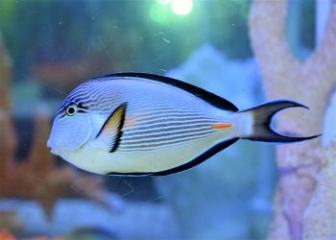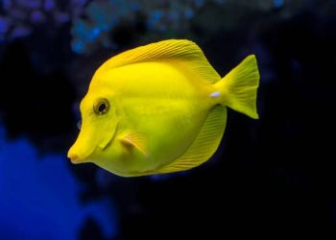Convict Tang - The Most Detailed Care Guide
Blog | by
Convict Tang, a marine aquarium fish with impressive appearance with black and white stripes, sharp spines on the tail, likes to live in groups, gentle, easy to raise.
Convict Tang, a marine ornamental fish belonging to the surgeonfish family, has a unique color that looks like it is wearing a "Prisoner's Uniform" with black and white stripes. It has a gentle temperament, likes to live in schools, is adaptable and easy to raise, and is very popular in saltwater aquariums.
To learn more about the origin, habits and how to raise striped catfish to grow well and have beautiful colors, please follow the article below of nice fish !
Information about striped catfish :
| Scientific name | Acanthurus triostegus |
| Common name | Convict Tang, Convict Tang, Striped Tang,... |
| Class | Actinopterygii - Ray-finned fishes |
| Set | Acanthuriformes |
| Surname | Acanthuridae |
| Spend | Acanthurus |
| Species | A. triostegus |
| Source | Indian Ocean, Pacific Ocean |
| Size | Average 15 - 20 cm |
| Source | 5 - 7 years |
Origin and distribution of Convict Tang
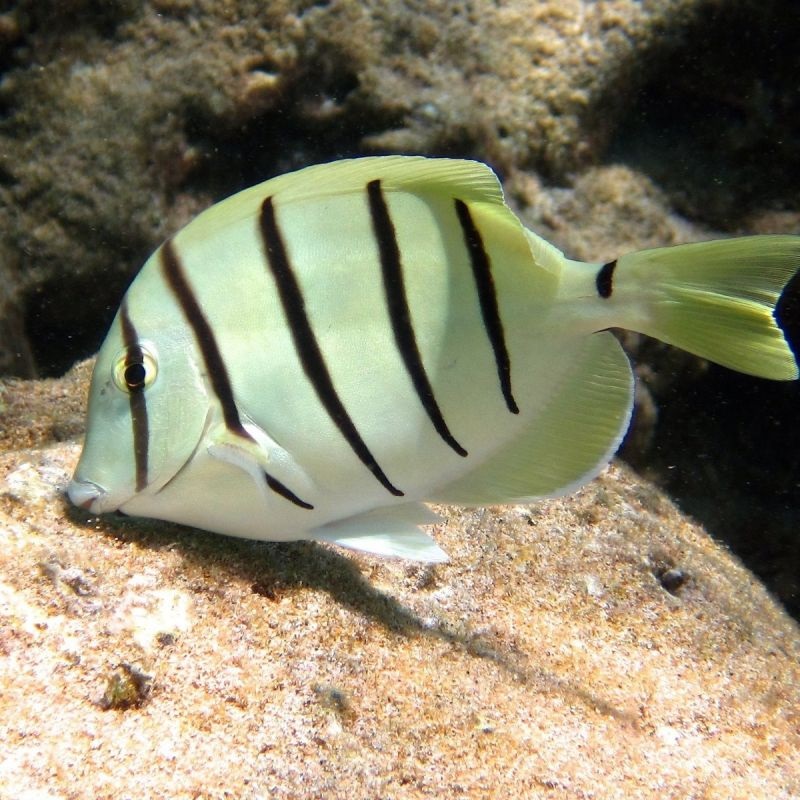
A striped bass is eating algae on a rock.
Convict Tang, also known as Acanthurus triostegus, is a marine ornamental fish native to tropical seas in the Atlantic and Pacific Oceans, especially in the following areas:
- Red Sea
- East Africa to South Africa
- Indian Ocean islands such as Maldives, Mauritius
- Southeast Asia such as Vietnam, Indonesia, Philippines
- Hawaii, Micronesia
- West coast of Central and South America.
In nature, this fish species often lives in shallow coastal waters, with depths of 1 - 15 m, especially coral reefs, seaweed beds and reefs, where there are moderate currents and warm temperatures.
In Vietnam, striped catfish are often distributed in coastal coral reef areas such as Nha Trang, Phu Quoc and Con Dao.
Convict Tang Appearance
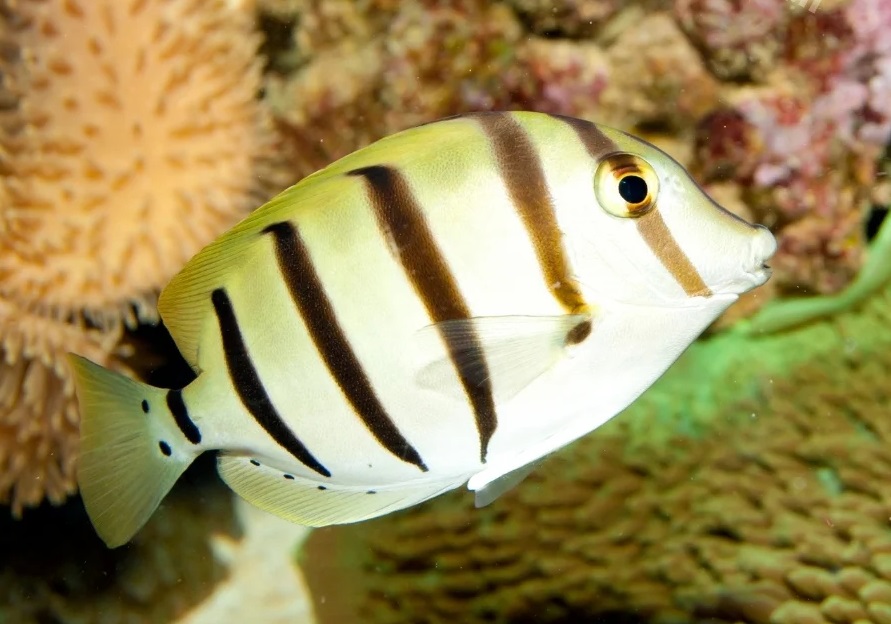
Close-up of the appearance of the striped catfish.
Right below are the physical characteristics of the striped catfish, let's see if this fish has anything special!
- Shape : Flat, thin fish body, oval shape, slightly long horizontally.
- Size : Average 15 - 20 cm, in nature can be up to 25 cm long.
- Color : The fish's body has an ivory or light yellow background, with 5-6 long black stripes running along the body. This appearance makes them look like they are wearing "striped prisoner uniforms", so they are also called "Convict Tang".
- Spines on the tail : This fish has two sharp spines on either side of the base of the tail, like other fish in the spinytail family.
- Eyes : Round, black, located below the first black stripe, looking very alert.
- Dorsal and anal fins : Long, running along the body.
- Caudal fin : Fan-shaped, opaque white and slightly transparent.
Convict Tang Behavior
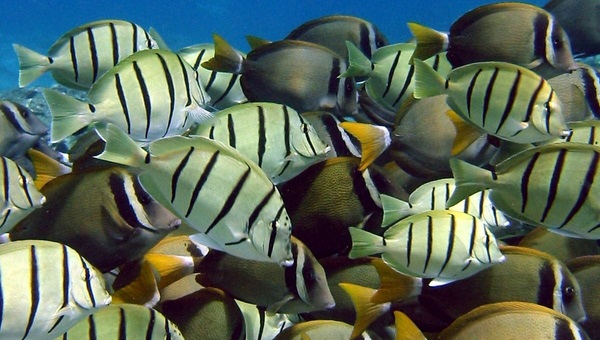
A school of striped fish is swimming in the ocean.
Let's learn about the habits of striped catfish to see if this fish is different from other fish in the same family.
Like to live in a pack
Striped Tangs are fish that like to live in schools, usually from 5 to 30 fish. When living in a large school, they will become more active and confident. If you only keep 1-2 fish in the tank, they can be stressed, become lethargic and even stop eating, so you should keep at least 5 Convict Tangs or more.
Like to eat algae
Convict Tang is an herbivore fish that diligently eats algae on rocks, glass, and even dead coral reefs. Therefore, in nature, Convict Tang plays an important role in helping to "clean the coral reef" and prevent them from overgrowing.
Mild temperament
Unlike many other tangs of the same species, striped tangs are quite peaceful, gentle, and never attack other fish in the tank. However, if kept in a space that is too small, they may have minor conflicts with other tangs of the same species.
Reproductive behavior
In the wild, striped catfish breed seasonally, usually in the summer when water temperatures are warmer. Females will lay their eggs on coral reefs, and then males will swim up and fertilize the eggs directly.
In captivity, Convict Tangs rarely breed unless provided with a large tank and suitable environment.
Convict Tang Breeding Guide
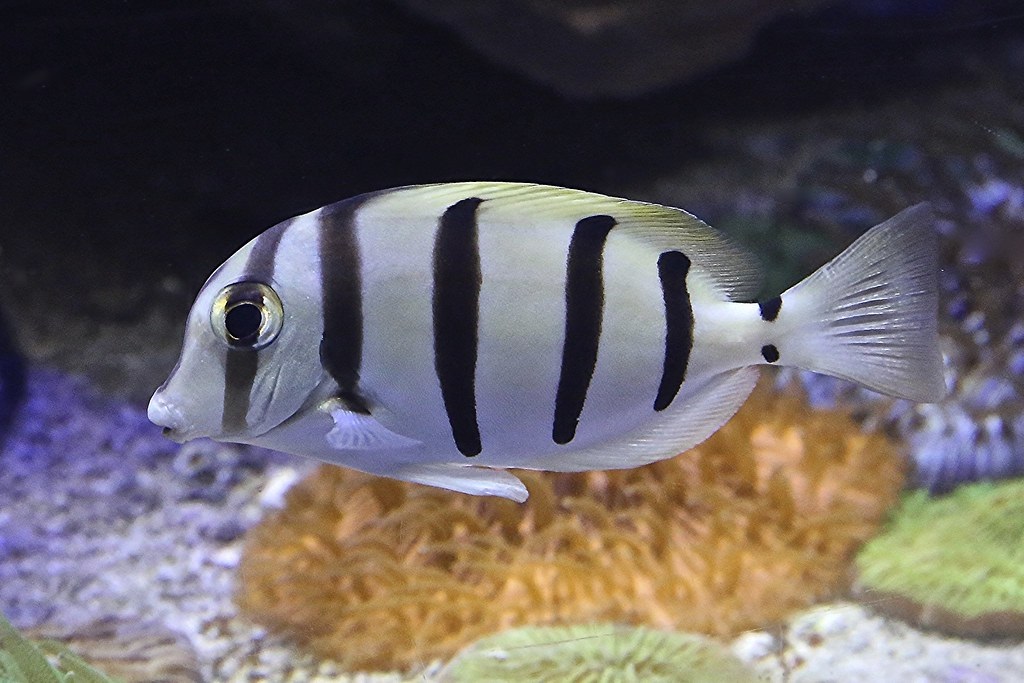
A striped bass is swimming near the coral reefs.
If you are interested and want to try your hand at striped catfish, please refer to the breeding instructions we share below to be able to raise healthy fish, develop well and have the most beautiful colors.
Preparing the pond for raising striped catfish
For striped catfish to adapt well to captivity, first you need to design a suitable tank, specifically as follows:
- Capacity : 200 - 300 liters if raising 1 - 2 Convict Tang fish, for a school of 5 or more fish, choose a tank from 400 - 600 liters.
- Size : The tank needs to be long and wide, not too high because they prefer to swim horizontally.
- Decoration : Decorate with live rocks at least 1/3 of the tank volume to create many hiding places for fish. The tank substrate should be white coral sand 2 - 3 cm thick, you can also grow soft corals and seaweed to make the tank more lively.
- Filtration system : Choose external or overflow filtration.
- Skimmer : Required to remove excess protein and organic matter in the tank.
- LED lighting system : Use soft light, suitable for marine fish.
- Equip with a water test kit : Necessary to be able to check water quality regularly.
Water parameters suitable for striped bass
The most important thing to help Convict Tang fish grow healthily, thrive, and have few diseases is stable and suitable water quality, ensuring the following criteria:
- Temperature : 24 - 28 degrees Celsius, maintained stable
- Salinity : 1.022 - 1.025 SG
- pH : 8.1 - 8.4
- Ammonia, Nitrite : 0 ppm
- Nitrate : < 20 ppm
- dKH : 8 - 12 dKH
- Calcium : 350 - 450 ppm, if coral is raised.
- Dissolved oxygen : High
Diet for striped bass
As shared above, striped catfish are herbivorous and specialize in eating algae, however, when kept in an artificial tank, you can feed them the following foods:
- Main food : Seaweed (nori), boiled spinach or spirulina
- Industrial pellet food : Choose pellets, flakes specifically for algae-eating fish.
- Live food : Can be supplemented with Artemia and small shrimp.
What fish should be kept with striped catfish?
Convict Tang is a gentle fish, living peacefully with many other marine aquarium fish, specifically as follows:
- Nemo Fish (Clown Fish)
- Goby, Wrasse
- Some other species of tangs are similar in size to avoid competition.
Striped catfish should avoid keeping with fish:
- Lionfish
- Japanese striped catfish
- Earl Tang (Soha Tang)
Common diseases in striped fish - Convict Tang
Below are common diseases in striped fish, please refer to them to know how to recognize and treat them promptly.
| Disease name | Reason | Symptom | Treatment and handling |
| White spot disease |
Fish are stressed due to sudden changes in temperature and pH. New fish in the tank have not been quarantined |
Fish appear with tiny white spots like salt on scales, fins, body and gills. Fish often rub against rocks, swim sluggishly, and stop eating. Fish often lie on the bottom |
Isolate sick fish immediately Slightly increase the temperature to 29 degrees Celsius to disinfect. Use specialized antifungal medicine for fish at the recommended dosage. Note that copper should not be used if there are corals in the tank. |
| Velvet disease |
Dinoflagellate parasites often appear due to long-term contaminated water environments. Due to fish stress |
Fish appear to have a layer of yellow velvet dust on their body. Fish breathe heavily, swim sluggishly Fish lose color and stop eating |
Isolate sick fish Use specialized medicine to treat velvet disease in fish such as Cupramine or Chloroquine phosphate. Temporarily turn off the lights for a few days to inhibit parasite growth. |
| Infection |
Fish injured by biting each other Dirty water, bacteria in the tank grow strongly |
Fish have ulcers, torn fins, swollen gills Fish body has mucous membrane, discolored Fish are lethargic and stop eating. |
Isolate sick fish Use mild antibiotics Clean the tank and change the water regularly. Add vitamin C and garlic to fish food to increase natural resistance. |
New striped catfish price list updated 2025
Currently, the price of striped tang fish on the market fluctuates a lot depending on the size, appearance, origin and whether the fish is purebred or not. Below is the updated price list of Convict Tang fish, please refer to it now!
| Striped catfish | Reference price | Note |
| Striped catfish size 6 - 8 cm | 190,000 - 250,000 | Healthy fish, suitable for large tanks of 200 liters or more |
| Adult striped catfish from 10 - 15 cm | 300,000 - 450,000 | Mature fish, beautiful shape and color |
| Tamed striped catfish size 6 - 10 cm | 350.00 - 500.000 | Fish have been domesticated and adapted well. |
Beautiful striped fish pictures
We invite you to admire the beautiful collection of Convict Tang images that we have compiled below to fully appreciate the beauty of this fish species.
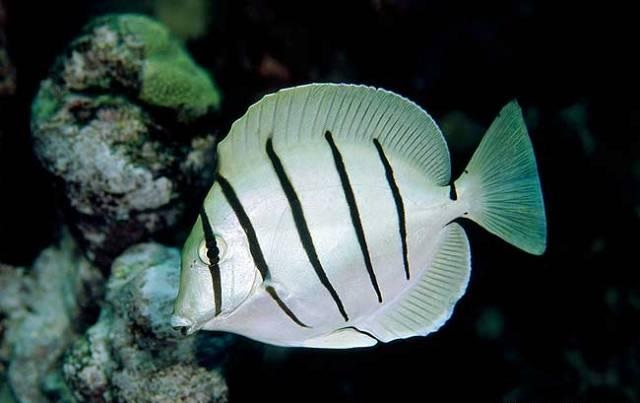
Impressive appearance of a striped catfish.

A school of striped catfish is swarming around the coral reef.

Frontal view of a striped bass.
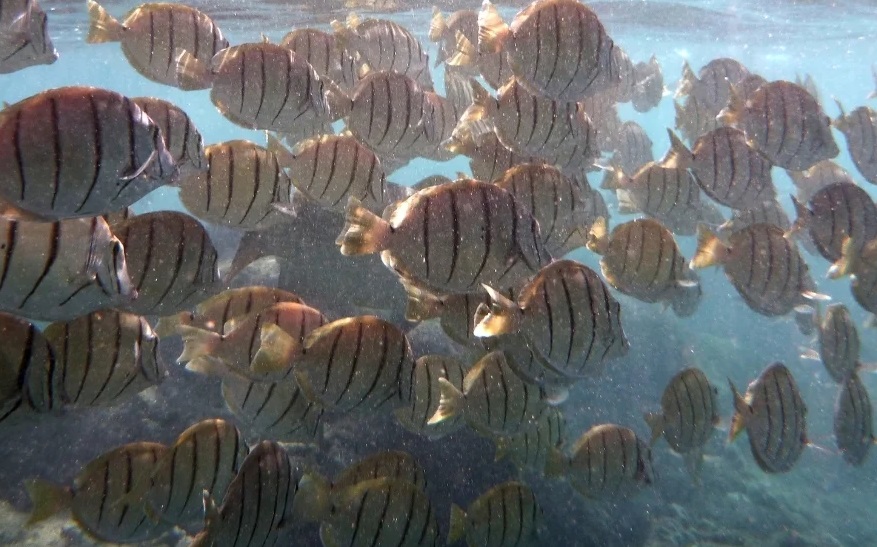
The image of a school of striped fish swimming in the ocean looks extremely beautiful.
Hopefully, through the article sharing detailed information about striped catfish above by nicefish.net, you have clearly understood the appearance, habits, behavior and how to raise this fish species. This is one of the beautiful, hot, easy-to-raise and adaptable marine ornamental fish species, suitable even for those who do not have much experience.
If you want to know more about saltwater and freshwater aquarium fish or tips for successful fish farming, visit our Blog section now so you don't miss any interesting articles!
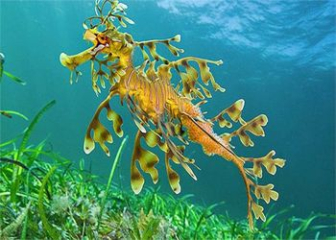
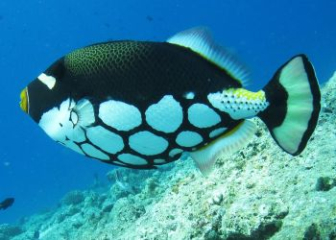
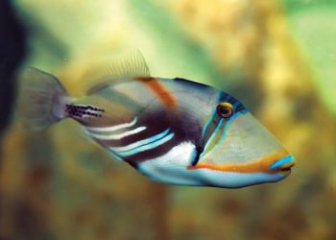
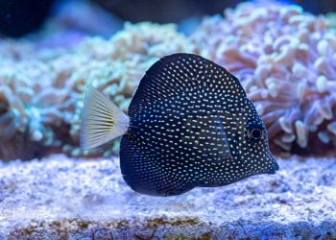
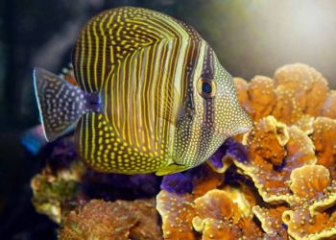
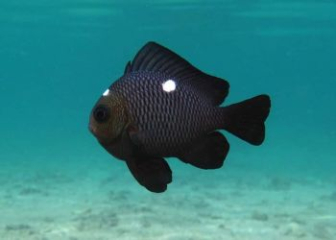
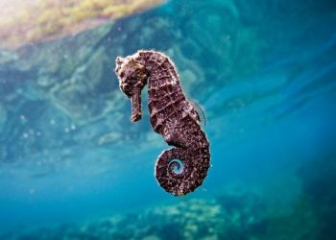





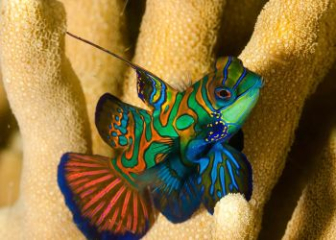

_350x250.jpg)


